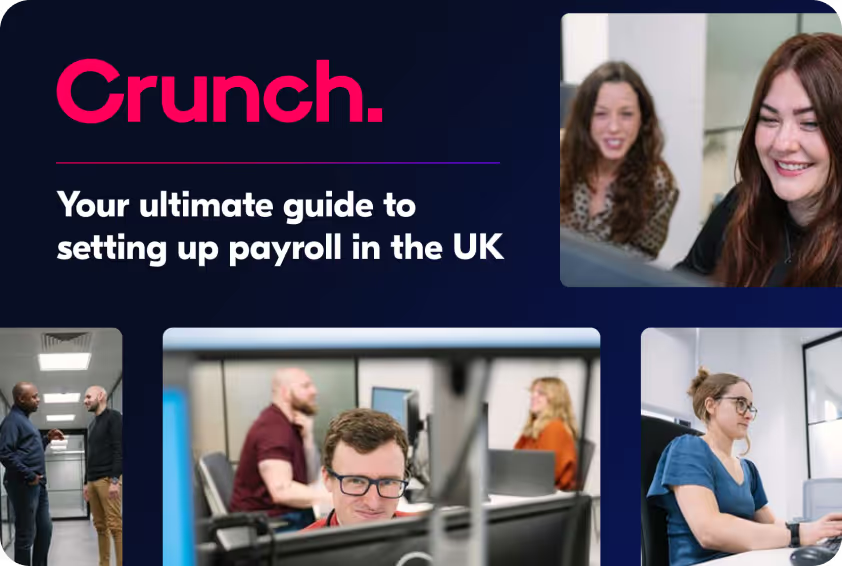The 2025/26 tax year begins on 6th April 2025. We’ve put this article together to highlight the main changes and other tax matters affecting individuals and businesses. We also have an article to help individuals and businesses get ready for the end of the tax year.
We’ve got a separate article that contains all the tax rates, thresholds and allowances for 2025/26.
Personal Tax, thresholds and allowances
The Personal Allowance (the amount you can earn before paying any Income Tax) remains at £12,570 for the 2025/26 and 2024/25 tax years. The threshold for paying the Higher Rate of income tax (which is 40%) remains at £50,270. Both of these thresholds are frozen until 2026.
Tax rates and thresholds for the UK (excluding Scotland)
There have been changes to thresholds in the UK and also different changes for Scotland:
1 There are different Income Tax rates for Scottish residents
Scottish Income Tax Rates and Tax Thresholds
The Scottish Government operates a different income tax regime compared to the rest of the UK, with a lower starter rate and more tax bands and tax thresholds.
The above table assumes the individual is receiving the Personal Allowance for tax-free income of £12,570 in the 2025/26 and 2024/25 tax years. The Personal Allowance is reduced by £1 for every £2 earned over £100,000. This is the same as the rest of the UK. There’s more background to the Scottish Income Tax rates and how to see if you’re classed as a Scottish taxpayer in our ‘Scottish Income Tax Rates and how to check if it applies to you’ knowledge article.
Impact on director tax-efficient salary recommendations
To make the most of your tax efficiency as a Director and Shareholder, we usually recommend taking a monthly salary up to the National Insurance (NI) Secondary threshold: £1,048 per month (or £12,570 per year) for the 2025/26 tax year, or £758.33 per month (or £9,100 per year) for the 2024/25 tax year. By combining this salary with dividend payments, you can achieve the best tax efficiency. You can learn more about dividends in our article, "What are dividends and what taxes do I pay on them?".
As the Lower Earnings Limit is below the point where you pay employee or employer NICs, you will still build up qualifying years for the state pension.
If you pay yourself a salary up to the relevant National Insurance threshold from your limited company, you won’t pay any Income Tax or National Insurance as long as it’s your only income. This is usually the most tax-efficient option. You can also check your National Insurance contributions using our free calculator.
As a company director, you can decide how much salary to pay yourself, but it’s a good idea to get advice from one of our expert accountants to make sure you’re paying yourself in the most tax-efficient way.
Dividend Allowance
The Tax-Free Dividend Allowance for the 2025/26 and 2024/25 tax year is £500. Here are the dividend tax rates, thresholds and allowances:
You can find out more about dividends and what tax you pay in our Knowledge article.
National Minimum Wage and National Living Wage
Whilst not strictly a tax year change, National Minimum Wage and National Living Wage amounts increased in 2025 to £12.21 for over 21's, £10 for 18-20 and £7.55 for under 18's.
Company vehicles - Benefit in Kind
When your company pays for fuel you have used personally or allows personal use of a company van, it is a benefit kind (BiK). These fuel benefit charges only apply if fuel is provided for personal use. You can see an up to date BIK rate here.
Student Loans
Student Loan Plan 1 and Plan 2 threshold increase and new Plan 4 repayments for Scottish Loans
The following tables show the thresholds to start repaying your student loans. For earlier years, please check HMRC’s website.
If you’re a director being paid salary and dividends from your company, and you’re paying back a student loan, you must remember the threshold for repayment is based on your total income.
This will apply to all current and future student loans where employers make student loan deductions. So if you run a payroll for any employees who have student loan deductions, you need to ensure you have a record of what type of loan they have, so that the correct deductions are made.
We have an article explaining Student Loan repayments when you’re self employed.
Postgraduate Master’s Loan and Postgraduate Doctoral Loan
A Postgraduate Master’s Loan is a type of loan introduced by the government to help with course fees and living costs while you study a postgraduate master’s course. The repayment of your Postgraduate Loan is treated the same as any other Student Loan and interest is charged from the day you get the first payment. Repayment will be at 6% for students in England and Wales on income above £21,000. The rate is 9% for Scottish and Northern Irish students with income over £18,330 per year.
Other personal tax reliefs and allowances
Higher-income Child benefit charge threshold
Since January 2013, there has been a clawback charge on the higher earner of a couple where one claims Child Benefit and has an income over £60,000. This increased from £50,000 prior to April 6th 2024.
Personal pensions
The lifetime allowance for pension savings remains at £1,073,100 and is frozen until 2026.
Capital Gains Tax
The Capital Gains Tax annual exempt amount for individuals is £3,000 for 2025/26 (same for 2024/25).
Inheritance Tax
There is no change to the Inheritance Tax (IHT) nil rate band, the threshold remains at £325,000 and is frozen at that level until 2026.
Business Asset Disposal Relief
The Business Asset Disposal Relief lifetime allowance limit remains capped at £1 million.
Corporation Tax, workplace pensions and allowances
Corporation Tax
Corporation Tax payable on company profits remains at 19%-25% for the 2025/26 and 2024/25 tax year. for the 2023/24.
Workplace pensions (auto-enrolment)
There are no changes to the minimum amount you need to pay into your employee’s auto-enrolment workplace pension. This means the total amount of employer and employee contributions remains a minimum of 8% of your employee’s qualifying earnings.
Annual Investment Allowance (AIA)
The permanent limit for the AIA was set at £200,000 on 1st January 2016. However, from 1st January 2019, the AIA limit was temporarily raised to £1 million, with this increased limit scheduled to remain in place until 31st December 2021. More information can be found in our Annual Investment Allowance guide.
Corporation Tax Relief (‘super deduction’) business investment tax relief and loss relief for businesses
The super-deduction tax relief allows 130 per cent first-year relief on qualifying main rate plant and machinery investments from 1st April 2021 until 31st March 2023 for limited companies.
The government allows trading losses up to £2 million to be carried back one year without restriction. For accounting periods ending between 1st April 2020 and 31st March 2022, this is extended to three years, with losses required to be set against profits of most recent years first before carry back to earlier years.
Need some help?
All of the above comments are for your information only. We always recommend speaking to an accountant for a more in-depth analysis of your circumstances. If you don't have an accountant or are looking to switch, give our friendly team a call on 01273 257165 or arrange a free consultation.

.svg)



.webp)













